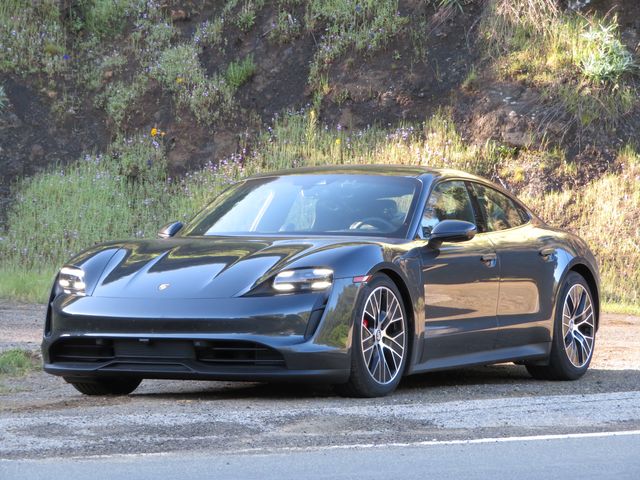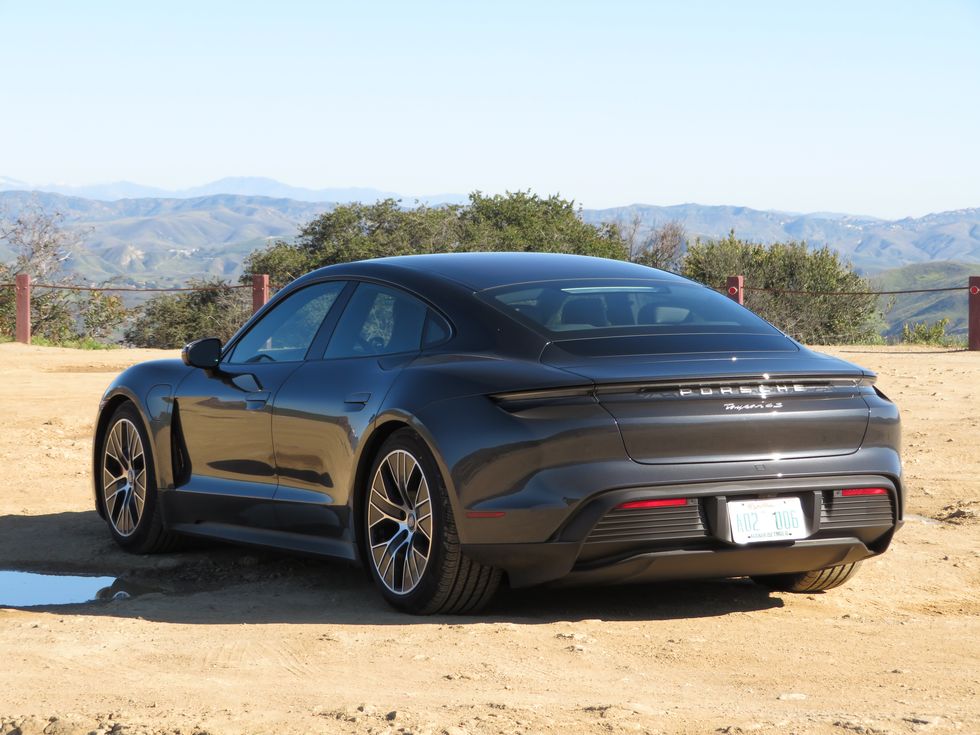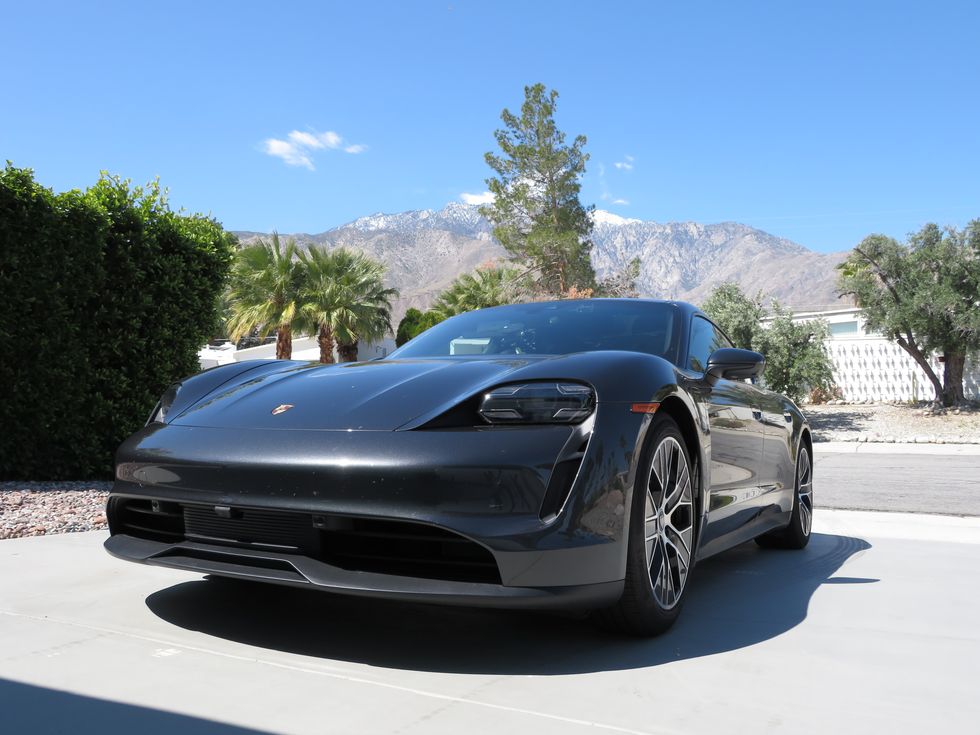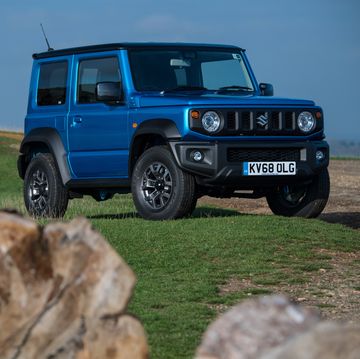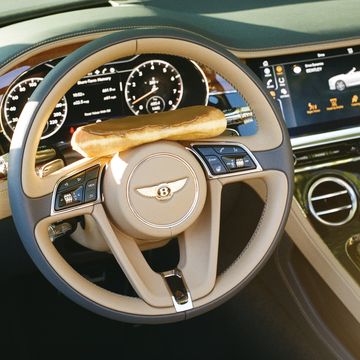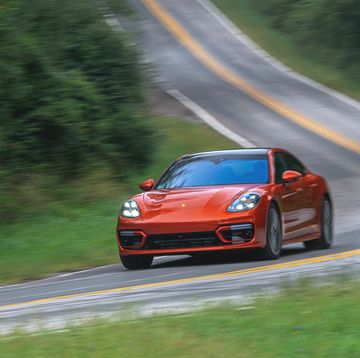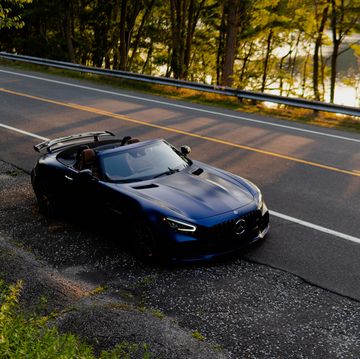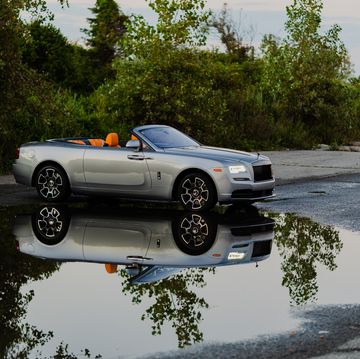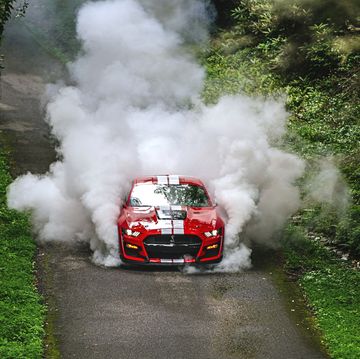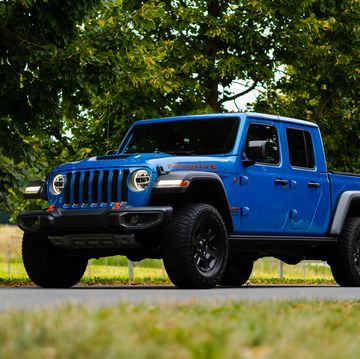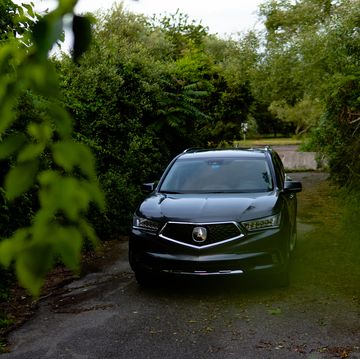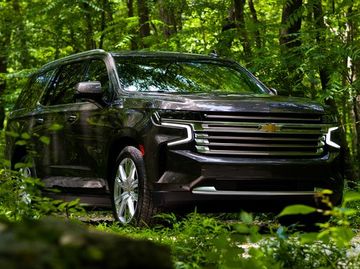For about a year, when I was 27 or 28, I became addicted to roller coasters. I was afraid of them for most of my life, until I moved to California, and my then-girlfriend successfully convinced me to try my first one. I got hooked, got a season pass to Magic Mountain, and would plan my day around when the fewest possible people would be there, in order to maximize ride time. After a few trips, I had gotten the lay of the land, experimented with arrival days and times, and come up with what I found to be an optimal path through the park. It worked. On a quiet Tuesday in late April, I rode the 4 or 5 most intense coasters in the park over 30 times. And I got what I asked for: an aching neck, nausea that rivaled the open Southern Pacific Ocean on a 72-hour dive trip, and a throbbing headache. I don’t think I went back for two years.
That’s kind of how I felt after a hard 20-minute canyon blast in the Porsche Taycan Turbo S last year; it can do things that cars really, physically should not be able to do. Driving that car hard is a unique experience that everyone should try—with instruction, at a Porsche Experience Center, on a race track, at least until you understand what something like that is capable of. Sure, it’s a $187,000 sedan: it had better be amazing. But you can spend a lot more money and not end up with car nearly so fast, so violently brutal, and so detached from what your body expects from it, that you end up feeling like you’ve had a hard day at Six Flags. Frankly, while I still enjoy the annual trip to the amusement park, I’m not sure I need my own personal magnetic-launch coaster to wake me up each morning on the way to work by smashing my retinas against the inside of my own skull.
That’s not to say that, for a bit less money, I wouldn’t enjoy those types of sensations, just dialed slightly downward. We laugh at those old-timey folks who thought once you passed 100 mph in a car, your face would literally melt off, but we’re nearly, figuratively there! It’s getting to the point where some of these EV’s, and I include a fully-charged Tesla P100D here, are so fast, and without the traditional sounds and vibrations to prepare the body for what’s going to happen, that the standard reaction is dizziness and nausea, no matter if you’re in the driver or passenger seat. A Taycan Turbo S may be able to do 200 launches in a row. If, as a driver, you make it past 10 or 12 without feeling substantially ill, you’re a better man than I. I can tell you that I felt more woozy after about five hard launches than I’d feel after about three stiff drinks.
Which brings me to the new Taycan 4S, which (at base price) sits south of the Turbo S by $82,000 and 228 horsepower. Unlike the Turbo and Turbo S, which have specific powertrain configurations, the 4S will be quite versatile. There are two available batteries, and several performance options that can drastically change how the car performs. At first, all 4S models, including our test vehicle, will have the larger, “Performance Battery Plus,” which, at 93 kwh, is probably the option you want, even at a $5,800 premium. The bigger battery provides 53 HP and 40 lb/ft more than the smaller, base 79-kwh battery, as well as more range. (The exact amount of extra range has not yet been determined as of 4/20/2020).
Also available a-la-carte from the Taycan Turbo and Turbo S parts bin are bigger wheels with stickier Michelin PS4S tires, and better brakes: the 4S comes with steel brakes, but Tungsten and Ceramic are both optional (Sidebar: As far as I know this is the only car on the market to come with a choice of three different brake hardware options). Our test car has the optional, 19-inch Aero wheels on eco-friendly Continental tires.
Most everything else, from a practical standpoint, is the same, or at least available, in all Taycan models.
In the same way I wrote how driving Porsche’s 992 Turbo S in ‘normal’ situations is fundamentally identical to driving their lower-tiered models; you have to be at full throttle to tell the difference between the two now, that’s what the Taycan 4S is like in traffic: exactly the same as the higher end models. The difference between a 19-inch wheel and the 21’s on the Turbo S is noticeable, and most of the time, welcome (though I had no complaints about the big rims at the time). The power is still more than most humans would ever need, and with the two-speed rear transmission, still unique in the EV space, the power keeps on coming right about the speed when other EVs die off. Because this is still a Taycan and “full power until no power” is in the model DNA, you don’t have to be sure the battery is fully topped off to enjoy the performance.
To quote myself from my last piece about this very car, “If I had never driven a Taycan, and you put me in a 4S and told me that was the Turbo S, I would still be impressed.” This thing is fast by any measure. Porsche says 0-60 in 3.8 seconds and 12.2 for the quarter mile—more than respectable, but I’d guess they are sandbagging by three tenths in both races.
The 4S shares its adaptive air suspension, steering system, and entire chassis architecture with the higher models, but because it uses a smaller rear motor, the 4S is actually 200 pounds lighter than the Turbo. A side effect of the smaller motor is a rear trunk 2.5 cubic feet bigger. Taycan, even at a hefty 4,954 pounds at the curb, still has the lowest center of gravity of any car Porsche makes. It feels sharp and responsive, though the limits of the eco-friendly tires can be reached quickly, especially when heated up from extended spirited driving. They squeal and howl for about 10 corners before they start to lose actual grip; for every day driving, they are what we’d call “fine for the task.”
Check out the video: the Taycan 4S offers basically all the sensations I got from the Turbo S, just dialed back to a level that isn’t slow, by any means, or even, a medium pace. It’s set to just fast enough that it won’t make you sick. Which, if you’re going to be using something every day, is probably right in the sweet spot.
Matt Farah is a lifelong car enthusiast who began his automotive career at dealerships, rental agencies, and detail shops before discovering the power of YouTube in 2006, with his channel The Smoking Tire. Farah has a Bachelors of Fine Arts from the University of Pennsylvania, with a concentration in Photography, helping not only create YouTube content but also providing his own photography for his Editor-at-Large position at Road & Track.
He has hosted and produced television series on NBC Sports, G4 Network, SPEED, and Esquire. The Smoking Tire Podcast is #1 in the category every week of the year. Now at 800+ episodes, The Smoking Tire podcast is the definitive guest stop for who’s who in the auto industry. Farah’s Westside Collector Car Storage is a game-changer in luxury, concierge parking that expanded to a second location in 2023.
